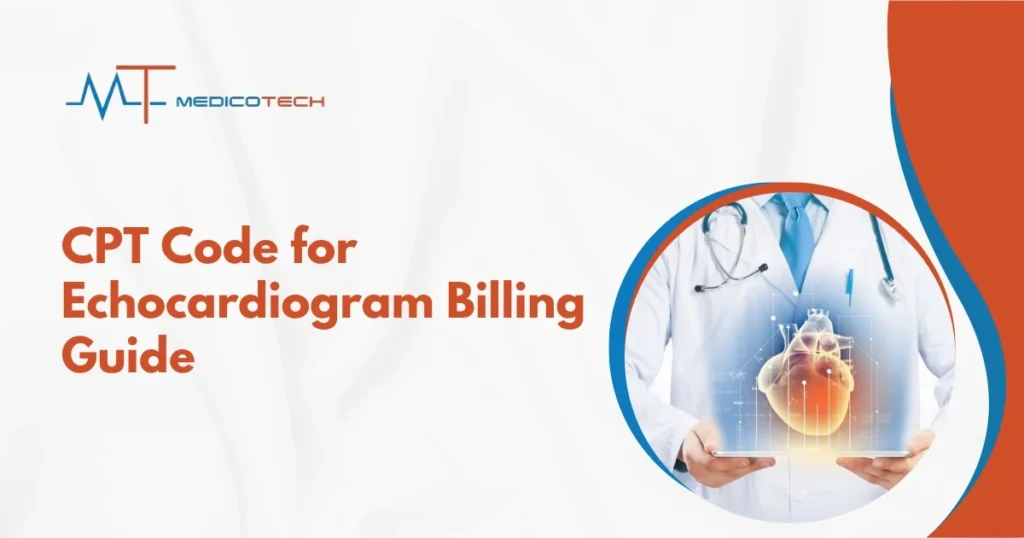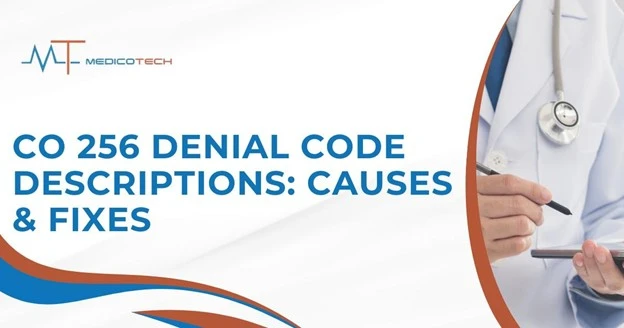Echocardiography is a vital diagnostic tool used by healthcare providers to evaluate the heart’s function and structure. As medical coding professionals, it’s crucial to understand the proper CPT (Current Procedural Terminology) codes associated with echocardiograms. Accurate coding ensures correct reimbursement for services rendered and minimizes the risk of denials. This guide delves into the CPT codes for echocardiograms, offering a detailed overview, coding scenarios, and billing insights to help healthcare professionals and medical coders stay compliant and optimize revenue.
Understanding Echocardiography CPT Codes
What is an Echocardiogram?
An echocardiogram (echo) is a non-invasive test that uses sound waves to create images of the heart. It helps assess the heart’s structure, function, and blood flow. Echocardiograms can detect heart disease, valve issues, and heart defects. This procedure is commonly used in cardiology practices, hospitals, and outpatient settings.
Why CPT Code Accuracy Matters for Reimbursement
Accurate coding is essential for receiving proper reimbursement for medical billing services. Echocardiograms, being complex procedures, require precise CPT coding to ensure that healthcare providers are reimbursed correctly. Mis-coding or using the wrong code can lead to claim denials or reduced reimbursement rates. It also plays a key role in complying with Medicare and private payer policies.
Core Transthoracic Echocardiogram (TTE) Codes
Transthoracic echocardiography (TTE) is the most commonly used type of echocardiogram. It involves placing a transducer on the chest to capture heart images. Here are the key TTE codes:
93303: Complete TTE with Spectral/Color Doppler
CPT code 93303 is used when a complete transthoracic echocardiogram is performed, including spectral and color Doppler imaging. This code is appropriate when the procedure involves the assessment of blood flow, velocity, and pressure in the heart’s chambers and vessels.
93306: Complete TTE Without Doppler
For a standard transthoracic echocardiogram that does not include Doppler imaging, CPT code 93306 is used. This code covers the basic evaluation of the heart’s structure without the additional Doppler features.
93308: Limited or Follow-up TTE
CPT code 93308 is used for a limited or follow-up transthoracic echocardiogram. This code applies when the physician performs a focused echo to assess a specific concern or follow up on a previously performed echocardiogram.
Advanced Procedure Codes
Echocardiography also includes advanced procedures, such as transesophageal echocardiography (TEE) and stress echocardiograms. These procedures are used when additional detail is needed.
Transesophageal Echocardiography (TEE) Codes
Transesophageal echocardiography (TEE) provides detailed heart images by inserting a probe into the esophagus, allowing for a closer view of the heart. The following CPT codes are associated with TEE procedures:
93312: Full TEE (Probe + Interpretation)
This code is used for a complete transesophageal echocardiogram, which includes both the insertion of the probe and the interpretation of the images.
93314: Interpretation Only
CPT code 93314 is used when the transesophageal echocardiogram is performed by another provider or if the physician only interprets the images without performing the procedure.
Stress Echocardiography Codes
Stress echocardiograms are performed to assess the heart’s performance under physical stress. They are typically used to diagnose coronary artery disease or evaluate heart function post-surgery.
93350: Exercise or Pharmacologic Stress
This code applies to stress echocardiograms that use either exercise or pharmacologic agents to stress the heart during imaging.
93351: With Continuous ECG Monitoring
CPT code 93351 is used when the stress echocardiogram includes continuous electrocardiogram (ECG) monitoring during the procedure to evaluate the heart’s response to stress.
Specialized Coding Scenarios
There are several specialized echocardiographic procedures that require additional coding and documentation.
Contrast-Enhanced Echocardiography
Contrast-enhanced echocardiography is used to improve the image quality during the procedure by using a contrast agent. The following CPT code applies:
+93352: Add-on Code for Contrast Agent
CPT code +93352 is an add-on code used when a contrast agent is employed during an echocardiogram. This code must be used in conjunction with the primary TTE or TEE codes.
Documentation Requirements for Contrast
When using contrast agents in echocardiography, it’s essential to document the use of the contrast agent clearly. Documentation should include the type of contrast used, the reason for its use, and any adverse reactions.
Fetal Echocardiography
Fetal echocardiography is a specialized procedure used to assess the fetal heart, typically performed during pregnancy.
76825: Comprehensive Study
CPT code 76825 is used for a comprehensive fetal echocardiogram, which includes a detailed examination of the fetal heart.
76826: Limited/Follow-up Study
CPT code 76826 is used for a limited or follow-up fetal echocardiogram, typically conducted to monitor changes or address specific concerns.
2025 CPT Updates & Emerging Tech
The CPT codes for echocardiography are periodically updated to reflect new technologies and procedures. The following are some of the significant updates for 2025:
0932T: AI-Driven HFpEF Detection (Replaces C9786)
CPT code 0932T is a new code for AI-driven heart failure with preserved ejection fraction (HFpEF) detection. This advanced technology allows for improved heart failure diagnosis and management. This code replaces the previous C9786 code.
Category III Codes for Novel Technologies
As new technologies in echocardiography and heart diagnostics continue to emerge, Category III codes are used to track experimental and unproven services. These codes allow providers to report emerging technologies that aren’t widely accepted yet.
Reimbursement Guidelines
Proper reimbursement for echocardiograms depends on accurate coding and an understanding of payer requirements. Below are the key reimbursement considerations:
Medicare Coverage Policies (NCD/LCD)
Medicare National Coverage Determinations (NCDs) and Local Coverage Determinations (LCDs) outline the coverage policies for echocardiography procedures. Providers must adhere to these guidelines to ensure reimbursement.
Technical vs. Professional Component Billing
Echocardiography procedures are often billed in two parts: the technical component (which includes the equipment and the technician’s time) and the professional component (which includes the physician’s interpretation of the images). Understanding the distinction between these two components is crucial for accurate billing.
Private Payer Variations
Private insurance companies may have different billing practices and reimbursement rates for echocardiograms. It’s essential to review each payer’s specific guidelines for echocardiogram billing to avoid denials and ensure proper payment.
Prior Authorization Requirements
Some private insurers may require prior authorization for certain echocardiogram procedures, especially for advanced or experimental procedures. Providers should verify authorization requirements before performing these procedures.
Avoiding Claim Denials
Claim denials are a common issue for medical coders. The following best practices can help minimize the risk of denials and ensure timely reimbursement.
Documentation Essentials
Complete and accurate documentation is essential for avoiding claim denials. Ensure that all relevant details, such as the type of echocardiogram performed, the reason for the procedure, and any special circumstances (such as contrast use or stress testing), are thoroughly documented.
Required Elements in Echo Reports
Echo reports should include the following key elements to ensure they meet payer requirements:
- Patient demographics
- Reason for the study
- Details of the procedure
- Findings and interpretation
- Recommendations for follow-up
Common Coding Errors & Fixes
Some common coding mistakes include:
- Using outdated codes
- Incorrectly selecting Doppler or non-Doppler codes
- Failing to report contrast use or stress testing
- Misunderstanding professional and technical component billing
Ensuring familiarity with the latest CPT codes and payer requirements will help reduce these errors.
Practical Resources
Quick Reference: Echocardiography CPT Cheat Sheet
A quick reference guide for echocardiography CPT codes can be an invaluable tool for coders. It should include the most commonly used codes, definitions, and payer guidelines, so coders can quickly find the information they need.
FAQs: Answering Top Coder Questions
Q: How do I code a complete TTE with Doppler?
A: Use CPT code 93303 for a complete transthoracic echocardiogram with Doppler imaging.
Q: Can I bill for stress echocardiography with continuous ECG monitoring?
A: Yes, CPT code 93351 should be used for stress echocardiography with continuous ECG monitoring.
Q: What is the code for a fetal echocardiogram?
A: Use CPT code 76825 for a comprehensive fetal echocardiogram and 76826 for a limited or follow-up study.




